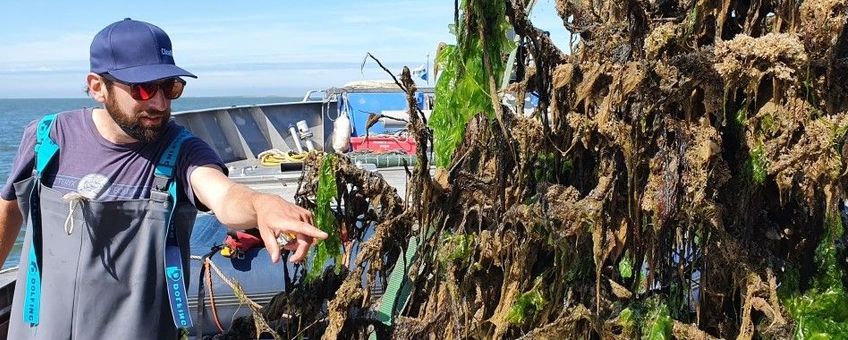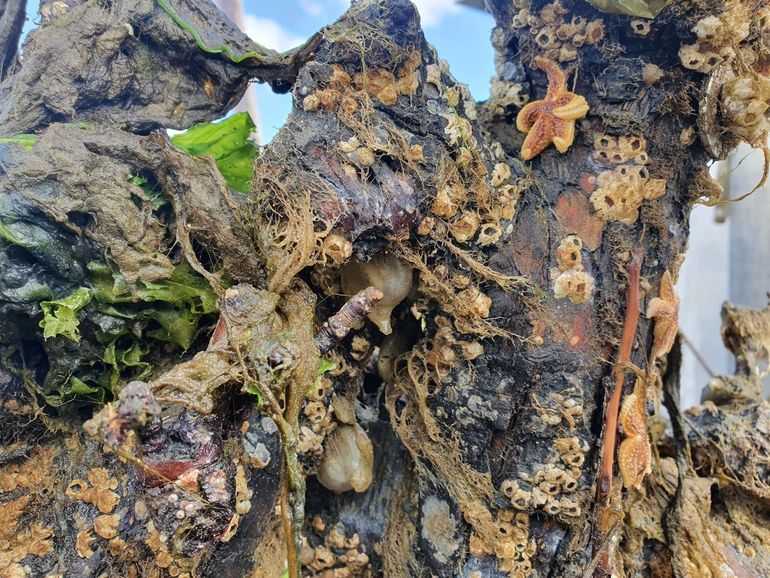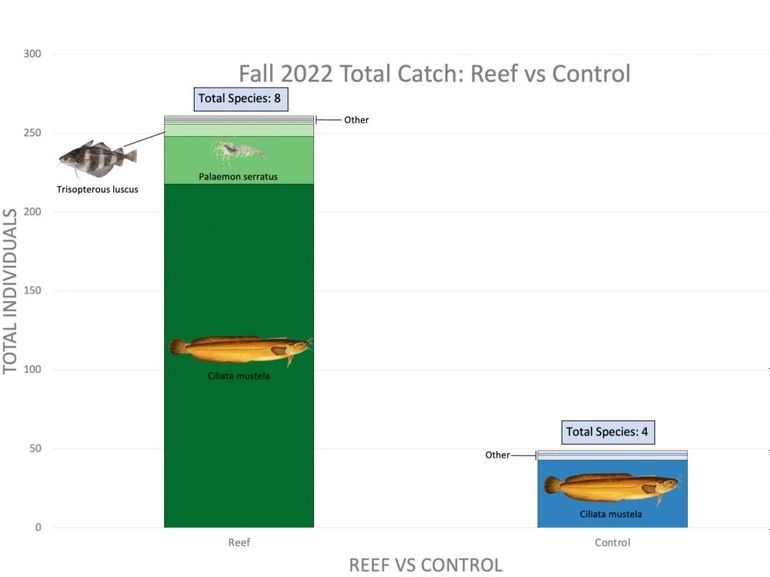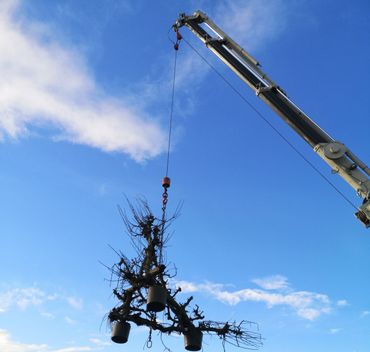
Tree reefs become oases of life in the subtidal Wadden Sea
NIOZ Royal Netherlands Institute for Sea ResearchToday, the Wadden seafloor is predominantly sandy. Hard substrates such as driftwood, peat, and stones used to be common in the Wadden Sea and provided a foundation for reef-building species such as mussels and oysters. These reefs, in turn, provided an important habitat for numerous species of fish, crabs and shrimps. In recent centuries, these natural hard substrates have gradually disappeared due to the damming of rivers, as fishermen removed them, and as they disappeared under the moving sands.
First results of the Tree Reefs project (Source: NIOZ)
Old pear trees
In the current experiment, researchers created three-metre-high reefs from cleared fruit trees, replacing driftwood that used to drift into the Wadden Sea from rivers in large quantities. "To our surprise, the tree reefs appear to have become true hotspots of biodiversity just six months after their placement. Bryozoans, mussels, anemones, and barnacles cover the wood of the higher parts of the reefs, while drifting seaweeds are mainly found at the base," said Jon Dickson, researcher at NIOZ.

A nice place for larger animals
These algae and filter feeders, along with the tree reefs, provide a refuge and foraging ground for fish such as rocklings, gobies, whiting-pout and eels. Measurements show that, on average, there are five times more fish between the reefs compared to the adjacent sandy bottom. Moreover, more species are found on the reefs and the fish are larger. The reefs are also home to many more prawns, an important food source for several fish species. Greater numbers of seals were also observed around the reefs.

The results show that tree reefs effectively bring a stable three-dimensional structure to the water, which increases biodiversity. Natuurmonumenten and Foundation The Rich North Sea are both enthusiastic about these initial findings. Quirin Smeele of Natuurmonumenten says: "We are surprised by the effects the tree reefs are having after just a few months. In particular, the strong increase in fish is beyond expectations." Christiaan van Sluis of The Rich North Sea adds: "These results may also make tree reefs an interesting recovery measure for the North Sea. Biodiversity restoration is badly needed there."

Wadden Mosaic
This tree reef project Wadden Mosaic is a research project aimed at better understanding underwater nature in the Wadden Sea. In this project by Natuurmonumenten, the Royal Netherlands Institute for Sea Research (NIOZ) and the University of Groningen, researchers are mapping the complete underwater landscape and its biodiversity for the first time. They will also investigate potential measures to protect and restore underwater life in the Wadden Sea. Experiments with hard substrates such as tree reefs from pear trees are part of this.
Project Wadden Mosaic is funded by the Wadden fund, the Directorate-General for Public Works and Water Management (Rijkswaterstaat) and the provinces of Friesland, Groningen and North Holland.
Text and movie: NIOZ
Pictures: Oscar Franken; Jon Dickson
